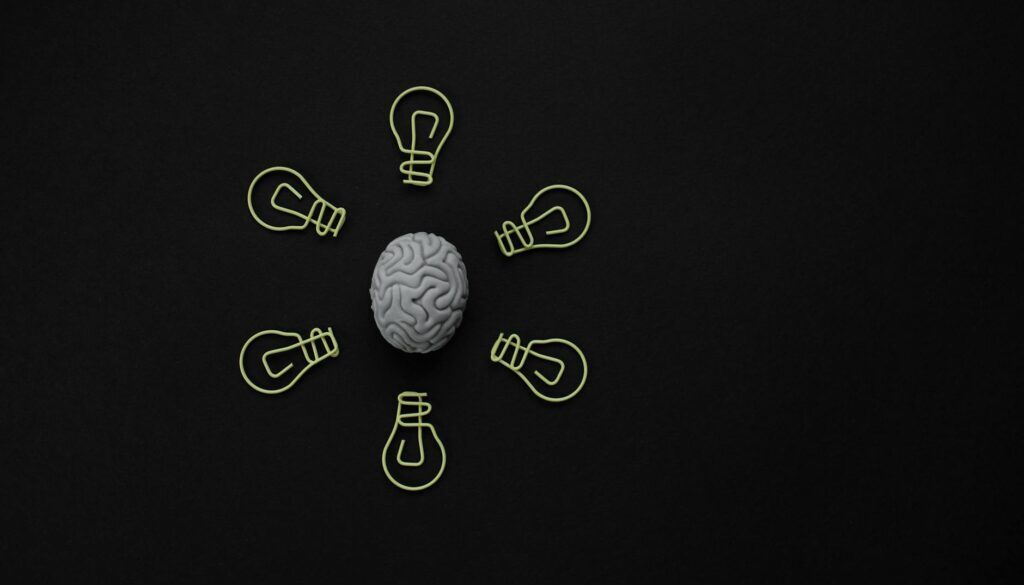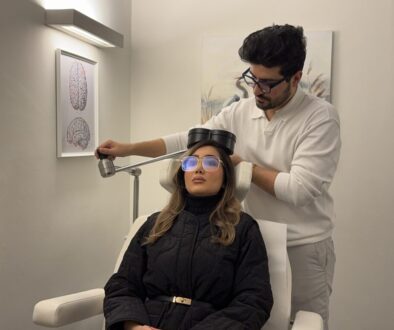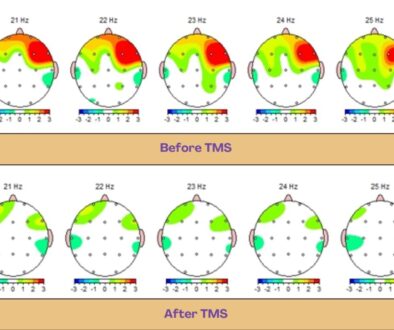The Science Behind TMS: How Brain Stimulation Rewires Neural Circuits
Transcranial Magnetic Stimulation (TMS) has transformed the landscape of mental health treatment by offering a non-invasive, drug-free approach to conditions like depression, anxiety, OCD, and more. But how exactly does it work? What’s happening inside the brain when magnetic pulses are delivered?
In this article, we explore the neuroscience behind TMS and how it promotes long-term changes in brain function by rewiring dysfunctional neural circuits.
🧠 What Is TMS?
Transcranial Magnetic Stimulation is a neuromodulation technique that uses focused magnetic fields to stimulate specific areas of the brain. Most commonly, TMS targets the dorsolateral prefrontal cortex (DLPFC)—a region involved in mood regulation, executive function, and decision-making.
TMS is approved by NICE in the UK for treatment-resistant depression and is widely used internationally for other conditions, including anxiety, PTSD, OCD, and cognitive enhancement.
🔁 Neuroplasticity: The Brain’s Ability to Change
At the core of TMS effectiveness lies a powerful biological principle: neuroplasticity—the brain’s ability to adapt and reorganise itself by forming new neural connections.
In people with depression or anxiety, certain brain regions become either underactive or overactive, leading to imbalanced circuits that perpetuate low mood, excessive rumination, or emotional numbness.
TMS works by modulating the excitability of these areas, helping the brain ‘reset’ dysfunctional patterns.
⚡ How Magnetic Pulses Influence Brain Activity
TMS uses electromagnetic coils to deliver repetitive magnetic pulses through the scalp. These pulses induce small electrical currents in the brain tissue, depolarising neurons in the targeted region.
There are two main types of stimulation:
High-frequency stimulation (10–20 Hz): Increases cortical excitability. Often used on the left DLPFC for depression.
Low-frequency stimulation (1 Hz): Reduces cortical excitability. Often used on the right DLPFC to calm hyperactivity in anxiety and OCD.
By modulating activity up or down, TMS encourages the brain to break out of rigid, maladaptive firing patterns and form new, healthier ones.
🧬 TMS and Functional Connectivity
Emerging brain imaging studies have shown that TMS doesn’t just affect the local brain region—it also alters functional connectivity between distant brain areas.
For example:
Stimulating the DLPFC can improve its connectivity with the subgenual anterior cingulate cortex (sgACC), a deep brain structure heavily implicated in mood regulation.
TMS can normalise default mode network (DMN) activity, reducing excessive self-referential thinking and rumination often seen in depression.
These widespread changes in network dynamics underpin the long-lasting benefits many patients experience, even after treatment ends.
🧪 How Many Sessions Does It Take to Rewire the Brain?
Neuroplastic changes require repetition and consistency. That’s why a full TMS protocol typically involves:
20–30 sessions
Administered daily, Monday to Friday
Over 4–6 weeks
Each session builds upon the last, gradually strengthening new neural pathways. Many patients begin noticing improvements within the first 2–3 weeks, though optimal effects often occur closer to the end of treatment.
🔍 Can We Personalise Brain Stimulation?
Yes—and this is where TMS is evolving fast.
At our London clinic, we use tools like quantitative EEG (qEEG) to create a personalised brain map. This helps us identify:
Which brain regions are under- or overactive
Abnormal brainwave patterns linked to emotional symptoms
Ideal stimulation sites for each individual
Personalised TMS leads to better outcomes and faster response times, as we tailor the protocol to the brain’s unique functional architecture.

🌱 Long-Term Effects: Why TMS Is More Than Symptom Relief
Unlike medications that temporarily alter brain chemistry, TMS aims to retrain the brain, providing structural and functional changes that endure. Studies show that TMS can lead to:
Increased synaptic strength
Improved neurotransmitter release (especially serotonin, dopamine, and glutamate)
Long-lasting changes in cortical thickness and grey matter density in mood-related areas
In essence, TMS doesn’t just reduce symptoms—it helps rebuild the foundation for emotional stability, clarity, and cognitive flexibility.
🧭 Final Thoughts: A New Frontier in Brain-Based Healing
The science behind TMS is rapidly evolving, but one thing is clear: it offers a revolutionary way to treat mental health conditions by directly influencing the brain’s circuits.
By harnessing neuroplasticity through targeted magnetic stimulation, we can help the brain restore balance, process emotions more effectively, and regain its natural rhythm of wellbeing.
If you’re struggling with persistent depression, anxiety, or OCD—and traditional therapies haven’t helped—TMS may be the missing link.

📍 Book a Consultation at Our London Clinic
Our clinic in Marylebone offers personalised, neuroscience-led TMS protocols designed for your brain’s unique needs. Book a free consultation today to discover how brain stimulation could help you reclaim your mental health.
👉 Book Now




